Wat Pariwat aka Wat David Beckham
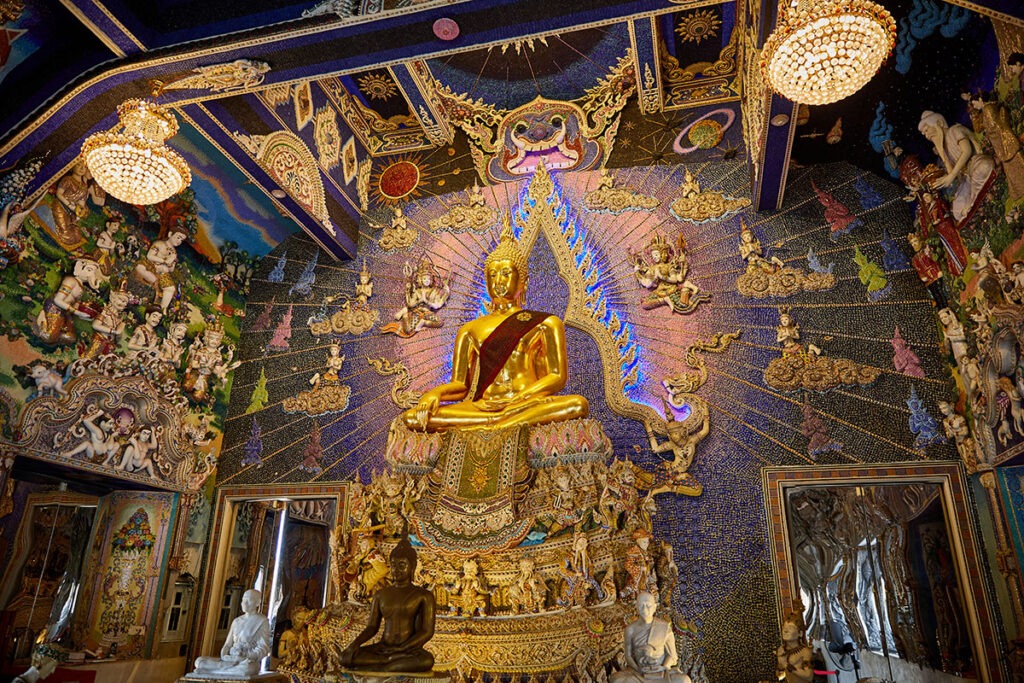
Wat Pariwat aka Wat David Beckham
“Wat David Beckham, kap,” I said to the taxi driver. Without batting an eyelid he released the brake, put his foot down and roared a kilometre or so up the road and deposited me in the grounds of Wat Pariwat. The temple has become known, at least among local taxi drivers and a gaggle of tourists, as Wat David Beckham due to a thirty-centimetre statue of the footballer which occupies the end of a frieze of garudas around the base of a Buddha image.
The frieze was unveiled in 1999 and Beckham is not the only well-known personality there, though he is probably the most familiar to Western visitors. Others include a couple of former Thai prime ministers and a cast of deities from several different faiths. The footballer is easily recognisable from the sponsor’s logo on his shirt, and his hairstyle, though the accuracy of his other features is questionable. The abbot, Phra Khru Phisan Phatthanaphithan, said adding contemporary motifs had been the sculptor’s idea.
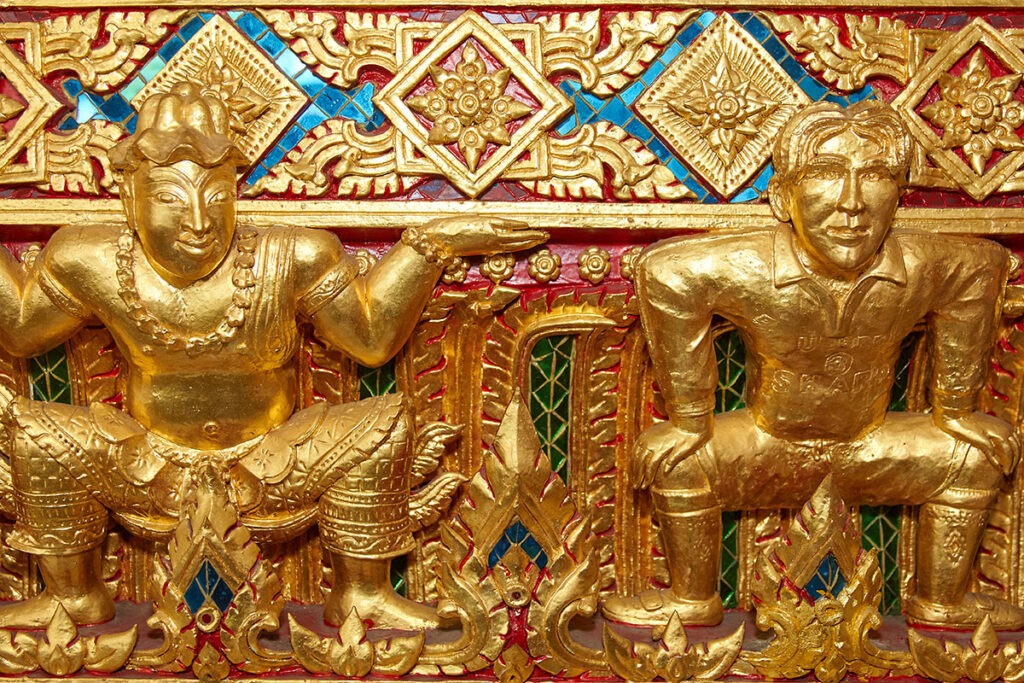
David Beckham and one of his team mates at Wat Pariwat
The temple complex sits on a generous tract of land between Rama 3 Road and the bank of the Chao Phraya River. There is no record of when it was first established, or indeed much of its early history but it is believed to have been built sometime in the mid-to-late eighteenth century. It is thought that after the first abbot passed away or moved on there was no one left to maintain it and so it subsequently fell into disrepair.
In the first half of the nineteenth century, two master craftsmen, Phra Phetphichai and Phra Ratchasongkhram, were commissioned to oversee the construction of Wat Protket Chettharam and Wat Phaichayon Polasep, both on the far side of the river. After their work was complete they noticed the poor state of the little temple on the opposite bank so took the leftover materials and set about renovating it. After they had finished they named it Wat Pariwat Ratchasongkhram.
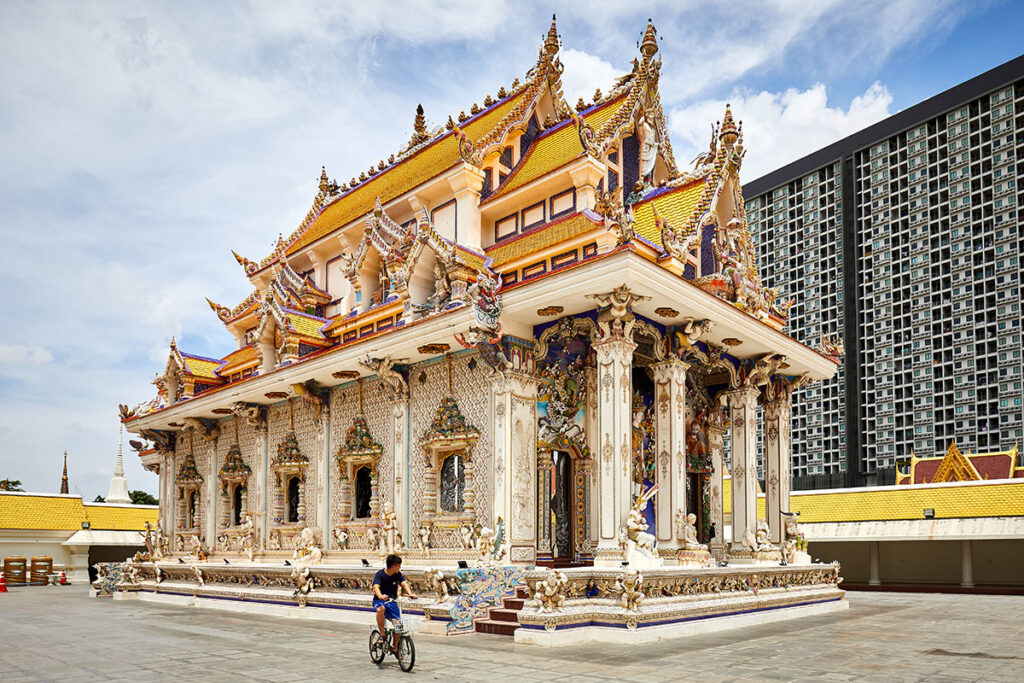
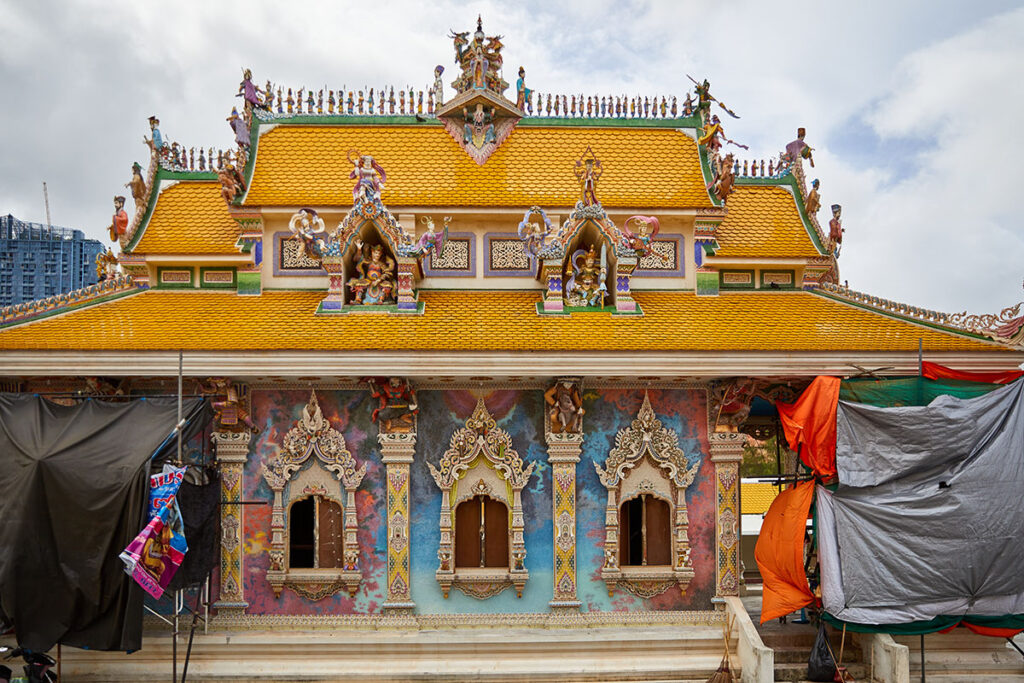
The exterior of the ubasot (left) and the viharn (right). Craftsmen work on the interior of the viharn (below)
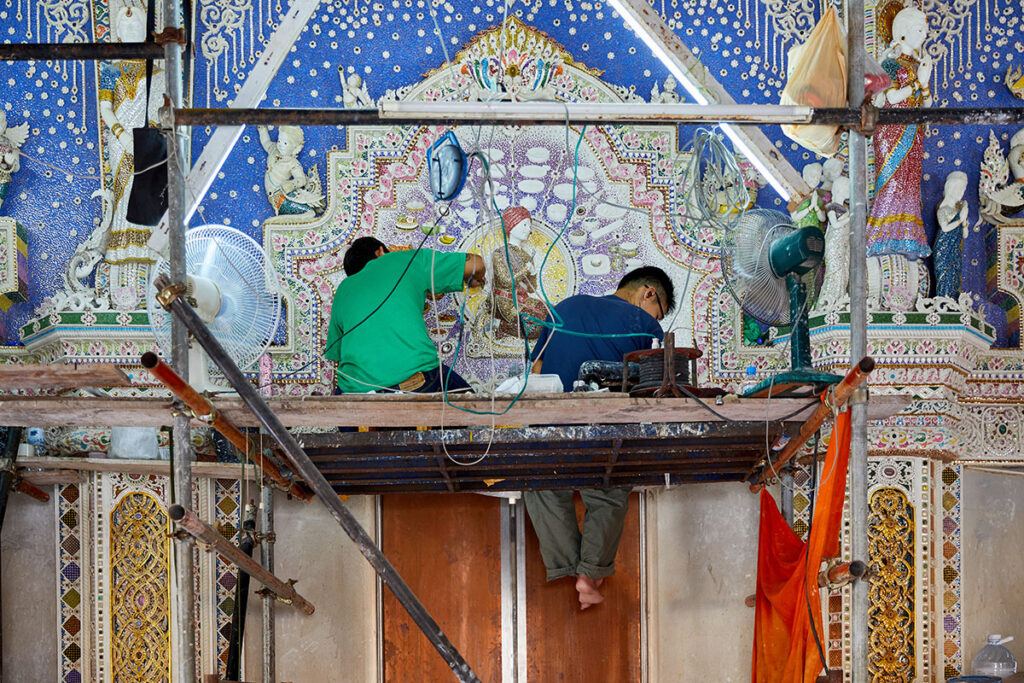
In later years it was known as just Wat Pariwat. One of the few records there are is the oral testimony given by Sengiam Thuen-im in 2005. He had been ordained at Wat Pariwat in 1935, at the age of 21, and said that some of the people who came to the annual festival used to get into fights. After the name was shortened the trouble ceased.
The principal Buddha image, which came from Sukhothai, is over 700 years old (main picture). It is believed to have been presented to the temple by King Nangklao (Rama 3). Nangklao was a devout Buddhist who oversaw the construction and renovation of over 50 temples and rescued many artefacts from others that had been too badly damaged by war. It now sits in a new and very untraditional ubosot.
Rebuilding for the modern era
In 2008 it was found that the foundations of the temple had been undermined by subsidence, and would need to be rebuilt. In doing so the sculptor’s idea of employing contemporary imagery was given full reign. The ubasot is now complete but the viharn, next door, is still a work in progress. Both buildings stand within a square cloister and are decorated, inside and out, with ceramic tiles and stucco figures of mythical creatures, historical figures and characters from popular culture. They are both beautiful and bewildering.
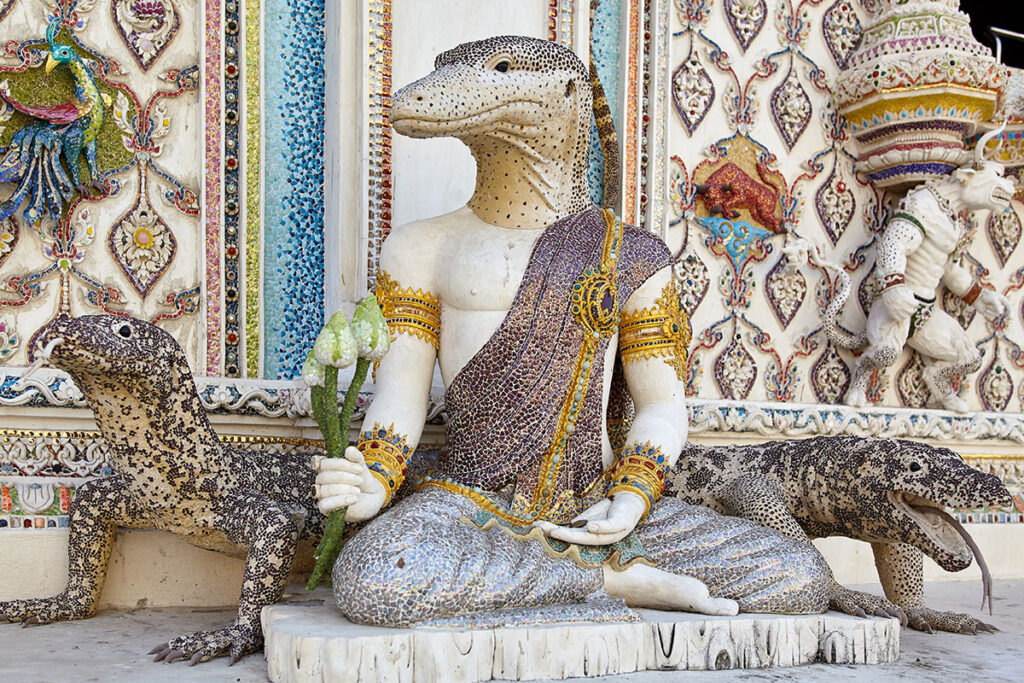
Stucco figures of monitor lizards, mythical creatures and Popeye
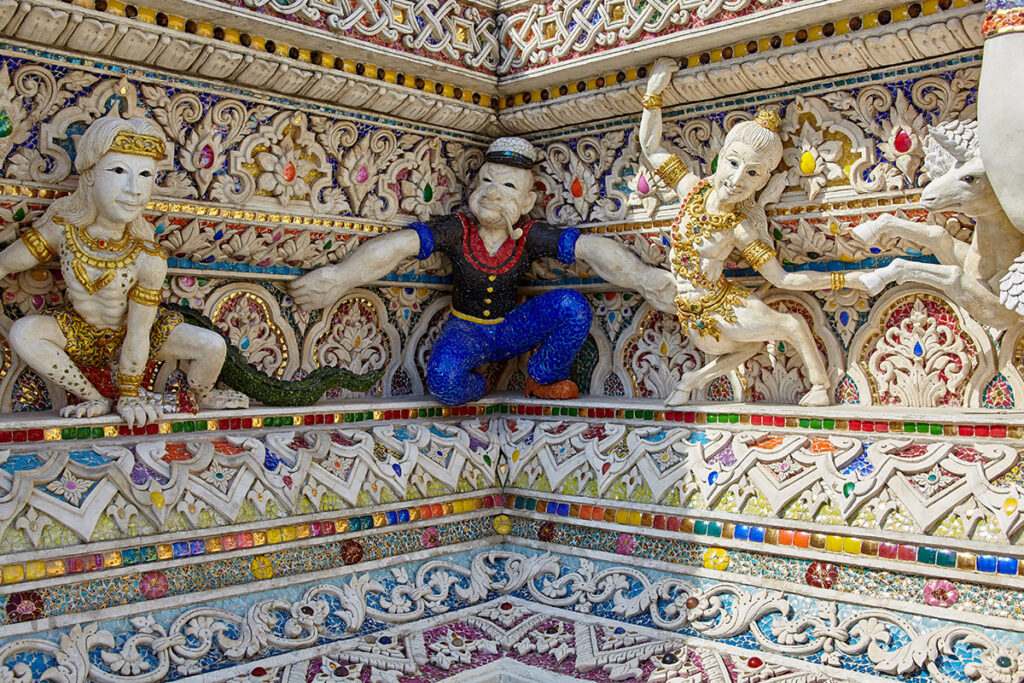
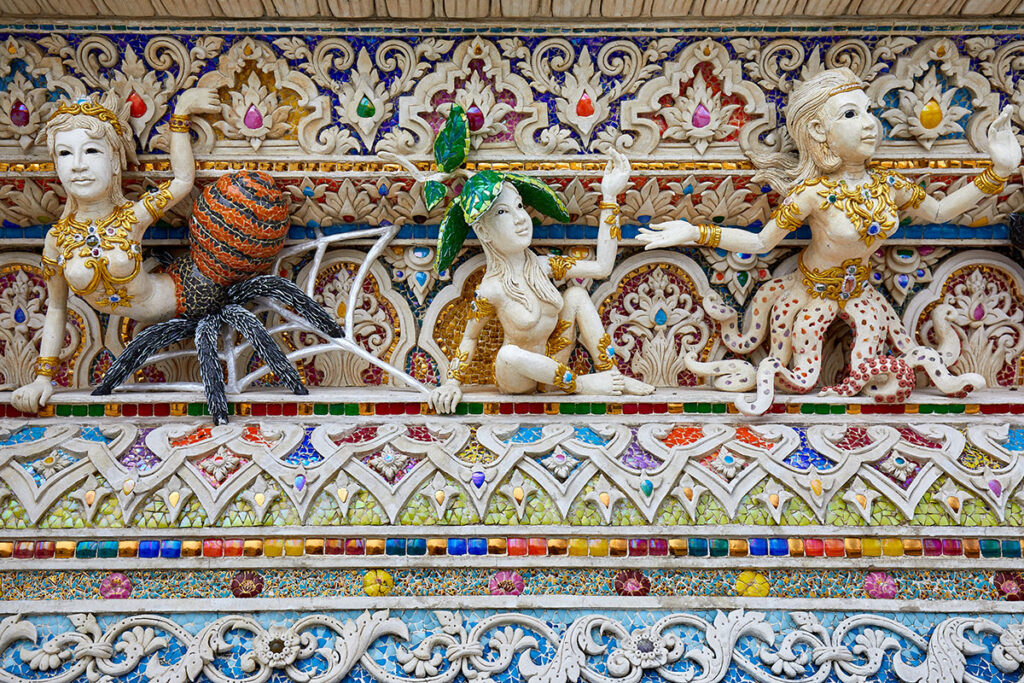
Amongst the figures adorning the ubasot are Batman and Superman, Popeye, Pinocchio and Falcor the luck dragon. There is a meditating monitor lizard, punks with multicoloured Mohicans, cutting the chains of a giant, a large-breasted rabbit with a selfie stick and many other creatures that appear part human part animal.
Work is continuing on the viharn but propping up the eaves you will find, amongst others, Captain Hook, Che Guevara, Tutenkamen and Geronimo. The figures on both buildings are exquisitely detailed, designed and to reflect the period in which they were created to speak to younger generations. The original scriptures, however, are still honoured. The monitor lizard is a reference to a story in the Tripitaka where Gautama Siddartha, in one of his former lives, had been born as one.
David Beckham, by the way, is not in the ubasot, he’s in the 50th Anniversary Chalermprakiat Pavilion. That is the large building with the blue tiled roof outside of the cloister. This is usually kept locked but if you ask, someone will come and open it for you.
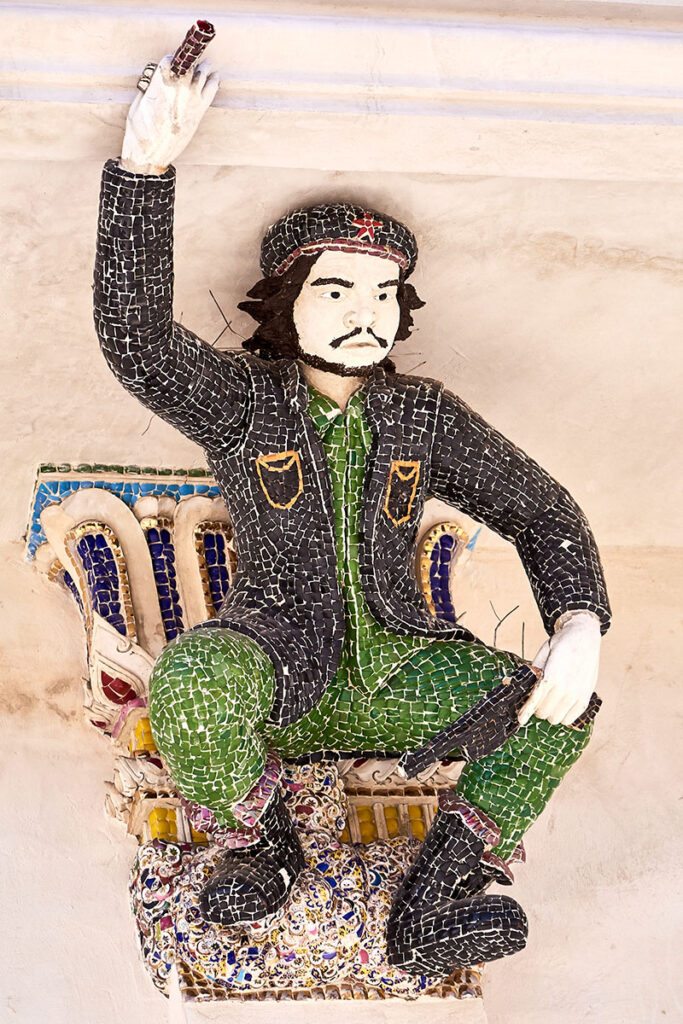
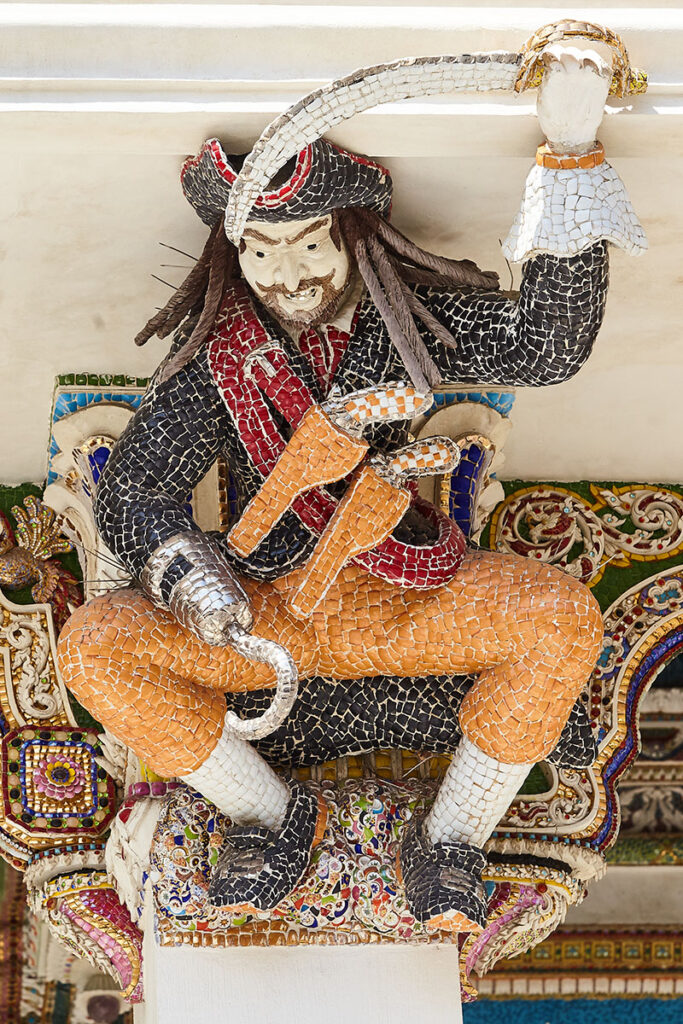
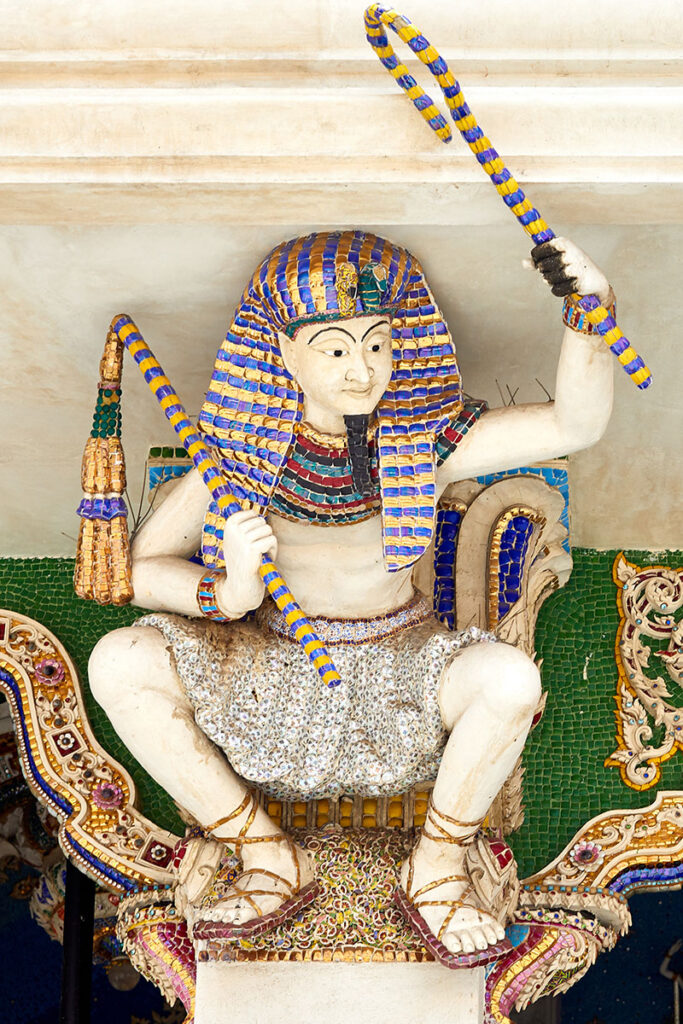
Some of the characters propping up the eaves of the viharn
To the side of this building is the sala where lay people may go for religious instruction. You may also buy amulets and incense. Behind this is an area shaded with old trees and bromeliads where you can pay your respects to Ganesha and get some lunch.
Afterwards, on the pier, you can make merit and a wish by purchasing some food pellets to feed the catfish that throng the water’s edge.
Wat Pariwat is at 734 Rama 3 Rd, Bang Phong Phang, Yan Nawa, Bangkok. It’s a bit off the beaten track. The easiest way to get there is to take the BTS Skytrain to Chong Nonsi and transfer to the BRT bus. Wat Pariwat is served by the stop of the same name.
Read also: Sukhothai, the cradle of Thai civilisation
Places to stayChatrium Riverside Hotel BangkokAnantara Riverside Bangkok Resort